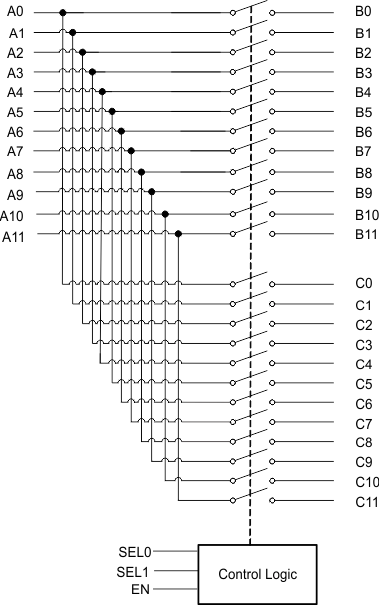SCDS356C November 2014 – March 2019 TS3DDR4000
PRODUCTION DATA.
- 1 Features
- 2 Applications
- 3 Description
- 4 Revision History
- 5 Pin Configuration and Functions
- 6 Specifications
- 7 Parameter Measurement Information
- 8 Detailed Description
- 9 Application and Implementation
- 10Power Supply Recommendations
- 11Layout
- 12Device and Documentation Support
- 13Mechanical, Packaging, and Orderable Information
Package Options
Mechanical Data (Package|Pins)
- ZBA|48
Thermal pad, mechanical data (Package|Pins)
Orderable Information
8.2 Functional Block Diagram
The following diagram (Figure 18) represents the switch function block diagram of the TS3DDR4000. Port A (A0-A11) can be routed to either port B (B0-B11) or port C (C0-C11) by configuring the SEL0 and SEL1 pins. The EN pin can be toggled high to put the device into the low-power mode with minimal power consumption.
